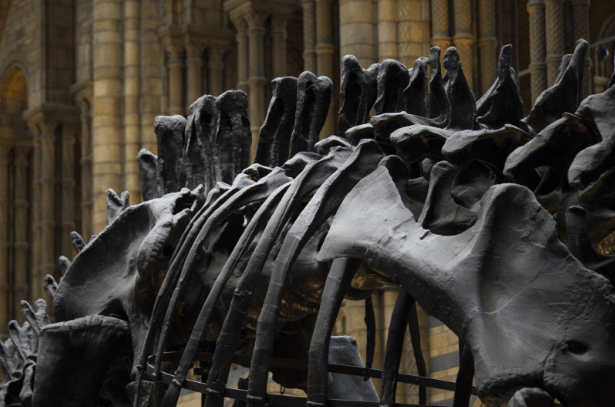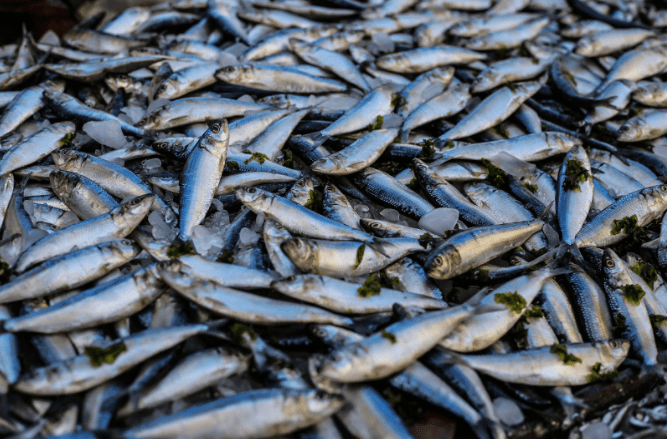The use of isotopic analysis on bones: dating, environmental analysis & migration
Many different isotopes can be measured on bone samples, depending on the areas of research interest. For example, radioactive isotopes along the uranium-thorium decay chain or the 14C decay chain can be used to date bones. On the other hand, other isotopic ratios such as strontium (87Sr/86Sr), boron (δ11B), carbon (δ13C) and nitrogen (δ15N) can be used to interpret the environmental conditions and migration patterns during the organism’s lifetime.
Dating
Bone samples can be dated (placed on calendar scale) using either Uranium-Thorium (U-Th) or radiocarbon (14C) dating methods. Whilst both methods are used, they each have their advantages and disadvantages.
Generally, bones are more reliably dated using 14C dating based on the fact that the 14C in bones remains relatively stable after death, resulting in high certainties of the date 14C ranges. On the other hand, uranium and thorium (as measured in U-Th dating) may be exchanged between the bone material and its external environment many years after death, sometimes resulting in low certainties of the U-Th date ranges.
However, while 14C is often the preferred method based on the potential certainty, it is only available from present day until approximately 40,000 years before present, whereas U-Th dating can be applied anytime over the past 500,000 years.
Read more about the differences between U-Th and 14C dating.
Geochemical Analysis
Strontium isotopes (87Sr/86Sr) can be analyzed in bone samples in order to determine the likely origin of vegetation consumed by the organism in question. This is based on the fact that plants take up strontium isotope from their underlying soils during growth, generating a distinct 87Sr/86Sr signature within the local food chain. As a result, an individual plant can be traced to a specific region at a very detailed local scale. When a human or animal consumes plants, some of the calcium within their bones is replaced by strontium, trapping the trademark 87Sr/86Sr of the local area. 87Sr/86Sr isotopes from multiple bone types (e.g. human teeth and faunal bones) can be compared to investigate whether the individuals lived in the same region.
Snoeck et al. (2018) investigated 87Sr/86Sr of cremated human bone remains at the infamous Stonehenge, where a few individuals were ceremoniously buried. The research demonstrated that nearly half of the buried people were originally from west Wales where some of the stones were also sources; as opposed to the remaining individuals who were living within the region of Wessex near Stonehenge. Read more about Strontium Analysis.
The analysis of carbon isotopes (𝛿13C) in bones can be used to distinguish between different unique profiles on individuals. Importantly, different types of plants (C3, C4 or marine vegetation) have unique 𝛿13C signatures. This allows one to interpret if individuals likely consumed more C3 (rice, wheat, fruits and nuts) or C4 (sugar cane) plant varieties. For example, Beaumont & Montgomery (2016) identified a change in diet from potatoes (C3 plants) to maize (C4 plants) during the Great Irish Famine by analysing the difference of 𝛿13C between teeth samples (formed in childhood) compared to 𝛿13C of rib samples (formed in last years of life).
The analysis of nitrogen isotopes (𝛿15N) are often used in combination with carbon isotopes as they provide further information on the trophic level of the organism in question since an enrichment (2-6‰) in 𝛿15N occurs at each progressively higher trophic level (Sealy, 2001). Furthermore, 𝛿15N can be used to interpret when food sources are of terrestrial (low 𝛿15N) or marine (high 𝛿15N) origin. For example, Richards & Trinkhaus (2009) demonstrated the Neanderthals predominantly consumed a carnivorous diet between 120,000 – 37,000 years before present, compared to a progressively mixed diet consumed by early modern humans in the years following between 40,000 – 27,000 years before present.
Read more about Dietary Isotopes (𝛿15N, 𝛿13C)
The analysis of oxygen isotopes (𝛿18O) in bones can be used to constrain general regions in which individuals lived or migrated from. This is based on the fact that 𝛿18O varies as a function of large scale variability in precipitation. This precipitation is taken up by vegetation through the roots and integrated into plant tissues. Any organism that consumed the vegetation or water within a certain region will therefore retain the precipitation signatures. For example, Schroeder et al. (2009) analyzed bone 𝛿18O (and other isotopes) from 17th – 19th century slaves found at a gravesite in Barbados. They discovered that while some of the slaves were born in Barbados, others were brought to the island through slave trade from various countries within Africa.
A multi-proxy approach is a full coverage option used to analyze bone samples using a variety of different techniques. By providing a bone sample of only 5 grams, a full suite of isotope analyses (δ13C, δ15N, δ18O, 14C, and Sr) can be completed. Using this technique, it’s possible to date your bone sample, while providing detailed information on your subject’s origin, migration and dietary profile.
References
Beaumont, J. and Montgomery, J., (2016). The Great Irish Famine: Identifying starvation in the tissues of victims using stable isotope analysis of bone and incremental dentine collagen. PLoS One, 11(8), p.e0160065. DOI: 10.1371/journal.pone.0160065
Richards, M.P. and Trinkaus, E., (2009). Isotopic evidence for the diets of European Neanderthals and early modern humans. Proceedings of the National Academy of Sciences, 106(38), pp.16034-16039. DOI: 10.1073/pnas.0903821106
Schroeder, H., O’Connell, T.C., Evans, J.A., Shuler, K.A. and Hedges, R.E., (2009). Trans‐Atlantic slavery: Isotopic evidence for forced migration to Barbados. American Journal of Physical Anthropology: The Official Publication of the American Association of Physical Anthropologists, 139(4), pp.547-557. DOI: 10.1002/ajpa.21019
Sealy, J., (2001). Body tissue chemistry and Palaeodiet in: Brothwell, D.R., Pollard, A. M., (Eds.), Handbook of Archaeological Science. John Wiley & Sons, Chichester, pp. 269-279.
Snoeck, C., et al. (2018). Strontium isotope analysis on cremated human remains from Stonehenge support links with west Wales. Scientific reports, 8(1), pp.1-8. DOI: 10.1038/s41598-018-28969-8
Image References
Bones spine: https://www.pexels.com/photo/architecture-bones-building-city-236482/
Fish: https://www.pexels.com/photo/photo-of-pile-of-fish-1578445/
Water: https://www.pexels.com/photo/clear-glass-container-with-white-round-beads-4667189/



